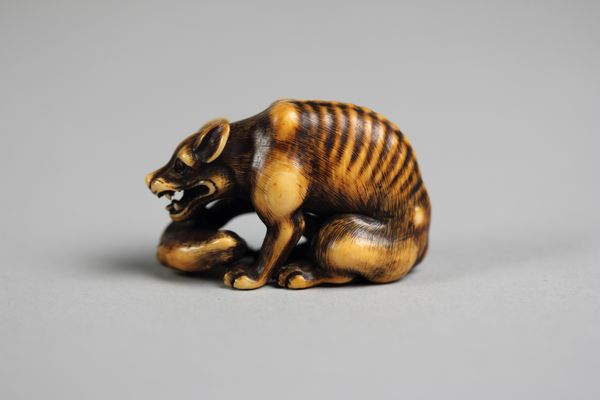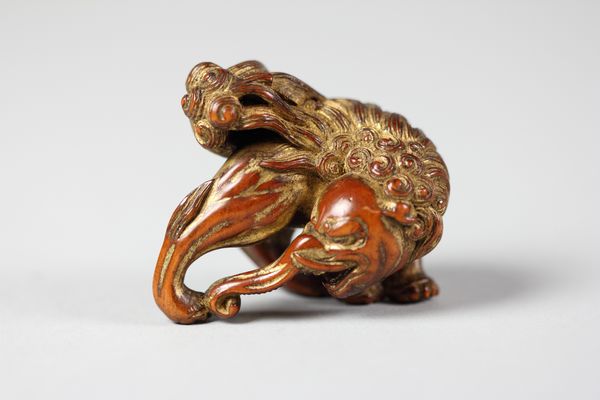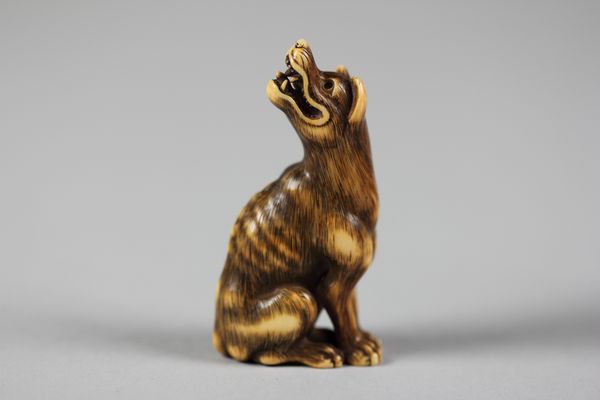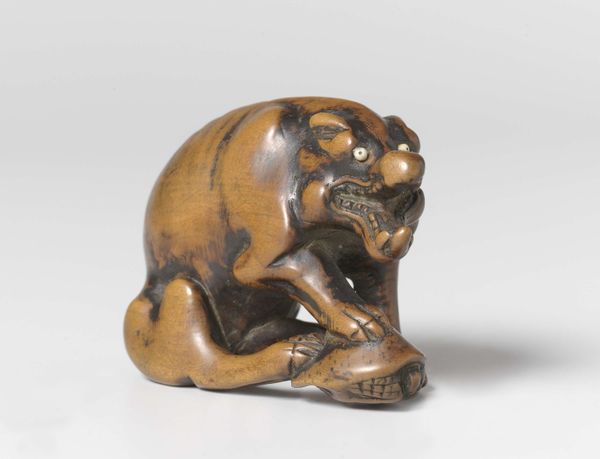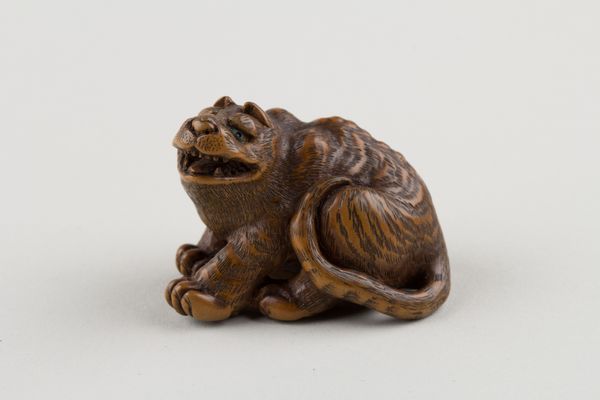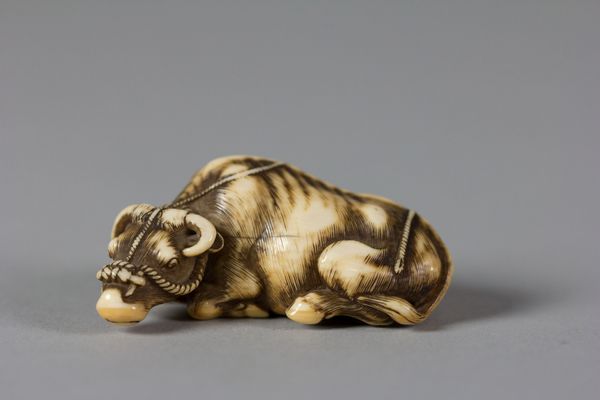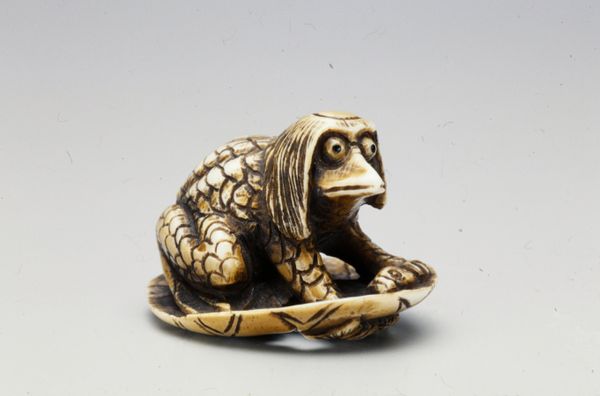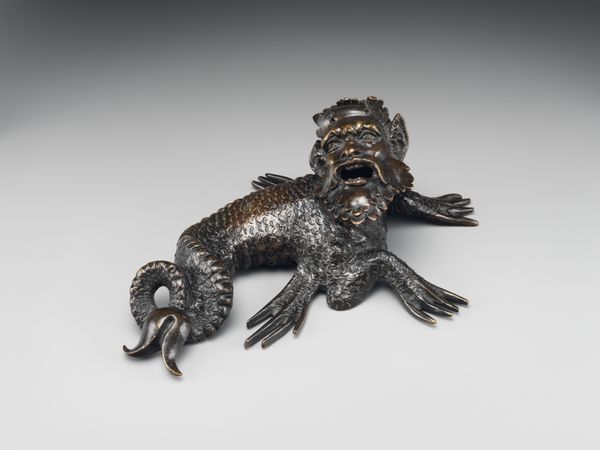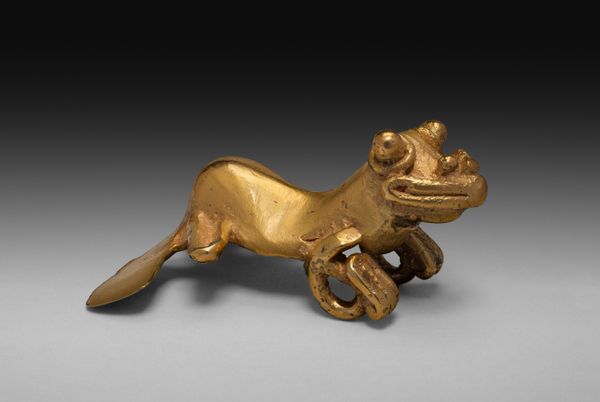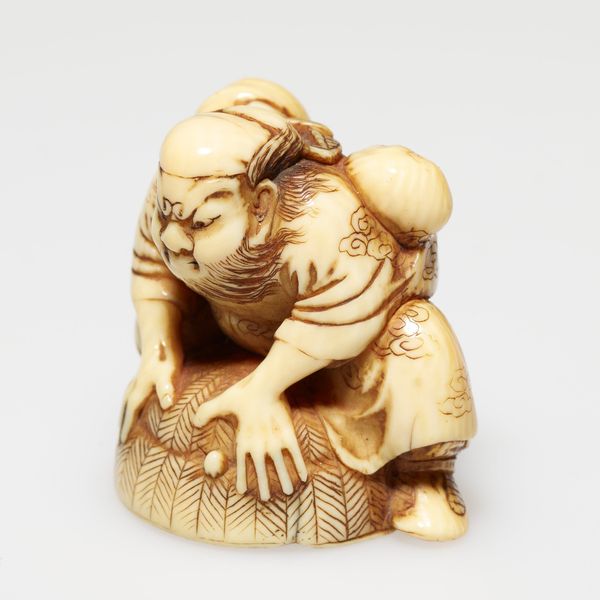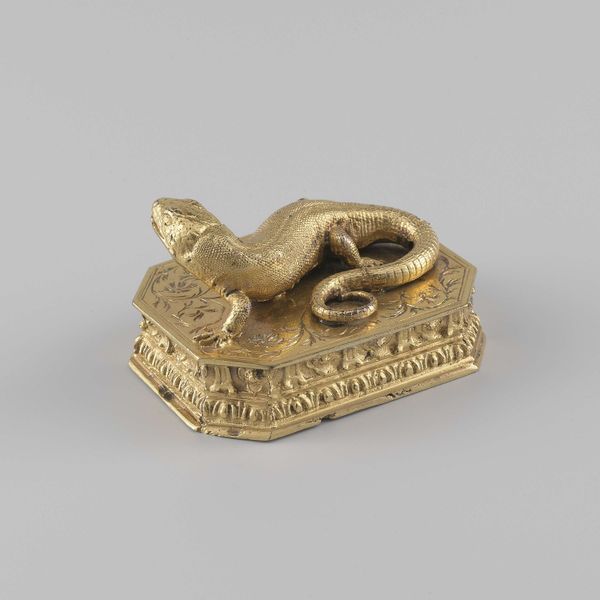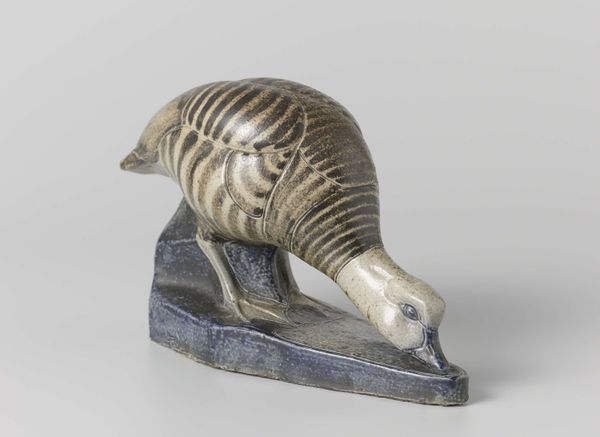
carving, sculpture, wood, ivory
#
carving
#
animal
#
sculpture
#
asian-art
#
figuration
#
sculpture
#
wood
#
ivory
Dimensions: 1 7/8 x 1 3/8 in. (4.76 x 3.49 cm)
Copyright: Public Domain
Editor: This small sculpture, "Wolf with deer leg", made of wood and ivory, was crafted by Tomotada in the mid-19th century. The wolf's expression seems really fierce for such a tiny piece! What strikes you most about it? Curator: What immediately catches my eye is how this netsuke, while seemingly a simple animal depiction, is deeply embedded in socio-political power dynamics. Think about the cultural significance of wolves in 19th-century Japan. What kind of stories were being told about animals, and who was telling them? Editor: I’m not sure I follow. Power dynamics? Storytelling? Curator: Well, consider the deliberate act of choosing to depict a wolf, especially one with a deer leg. Does it reinforce the common perception of the predatory animal and thus perhaps justify power imbalances within human society? Or does it offer a glimpse into nature’s struggle to survive in a context increasingly shaped by the consolidation of political power during the late Edo period? Editor: I see, so by presenting it in the context of social roles, you see more than just an animal carving; it reflects cultural values about status? Curator: Exactly. The choice of subject, the material – ivory was itself a status symbol – all speak to the values of the patron and the societal role the artwork was meant to play. Moreover, who has the power to depict this scene, to circulate its image, to define its narrative? Those are the questions that really excite me. Editor: I never would have considered how something so small could have so many layers! Thinking about it as a commentary on power structures definitely shifts my perspective. Curator: Absolutely. Seeing art as a product and reflection of power reveals so much about the past – and the present!
Comments
No comments
Be the first to comment and join the conversation on the ultimate creative platform.
